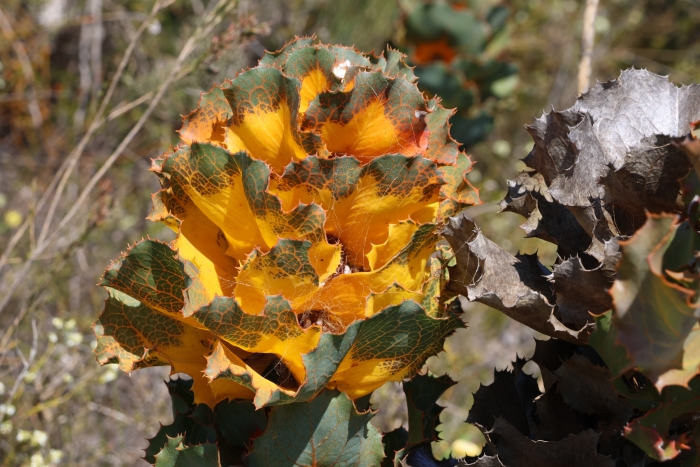Royal Hakea
(Hakea victoria)
Royal Hakea (Hakea victoria)
/
/

© Greg Tasney
CC BY-SA 4.0
Image By:
© Greg Tasney
Recorded By:
Copyright:
CC BY-SA 4.0
Copyright Notice:
Photo by: © Greg Tasney | License Type: CC BY-SA 4.0 | License URL: http://creativecommons.org/licenses/by-sa/4.0/ | Uploader: gregtasney | Publisher: iNaturalist |

























Estimated Native Range
Summary
Hakea victoria, commonly known as Royal Hakea or Lantern Hakea, is an evergreen shrub native to the sandy plains and heathlands of the south coast of Western Australia, particularly between Albany and Esperance, including Fitzgerald River National Park. It typically grows to a height of 3-10 feet (0.9-3 meters) and a width of up to 3 feet (0.9 meters). The plant is notable for its striking foliage, with alternately arranged, rough, leathery leaves that are green at the base and shade to yellow at the apex. The leaves’ unique coloration and shape contribute to its common name, resembling a lantern. Royal Hakea blooms from June to October, producing clusters of small, inconspicuous cream-white, red, or pink flowers that are often hidden among the leaves.
Royal Hakea is valued for its distinctive foliage, which adds textural and visual interest to gardens. It is used in cultivation for ornamental purposes, particularly in xeriscaping and native plant gardens, due to its low water requirements and adaptability to poor soils. The plant thrives in well-drained, sunny positions and is tolerant of rocky, quartzitic, or lateritic sand. It is moderately frost-tolerant but does not cope well with humidity. Propagation is most successful by seed, as it can be challenging to grow from cuttings. In cultivation, it is important to avoid overwatering and to provide adequate space for its natural growth habit.CC BY-SA 4.0
Royal Hakea is valued for its distinctive foliage, which adds textural and visual interest to gardens. It is used in cultivation for ornamental purposes, particularly in xeriscaping and native plant gardens, due to its low water requirements and adaptability to poor soils. The plant thrives in well-drained, sunny positions and is tolerant of rocky, quartzitic, or lateritic sand. It is moderately frost-tolerant but does not cope well with humidity. Propagation is most successful by seed, as it can be challenging to grow from cuttings. In cultivation, it is important to avoid overwatering and to provide adequate space for its natural growth habit.CC BY-SA 4.0
Plant Description
- Plant Type: Shrub
- Height: 6-10 feet
- Width: 3-5 feet
- Growth Rate: Moderate
- Flower Color: Pink, White
- Flowering Season: Spring
- Leaf Retention: Evergreen
Growth Requirements
- Sun: Full Sun
- Water: Medium, High
- Drainage: Fast, Medium
Common Uses
Bird Garden, Drought Tolerant, Erosion Control, Low Maintenance, Showy Flowers
Natural Habitat
Sandy plains and heathlands of the south coast of Western Australia
Other Names
Common Names: Victoria Hakea, Lantern Hakea
Scientific Names: , Hakea victoria,
GBIF Accepted Name: